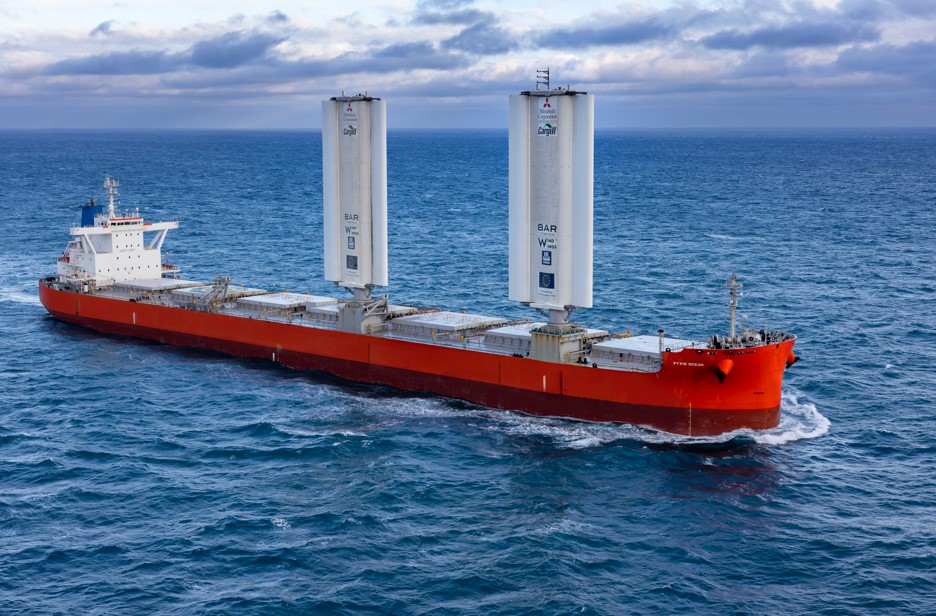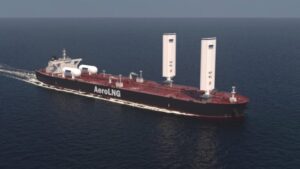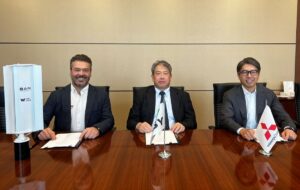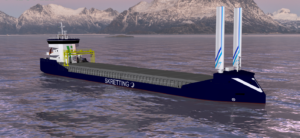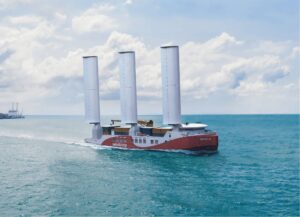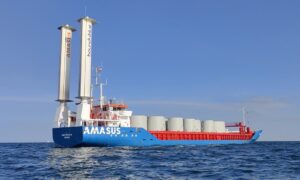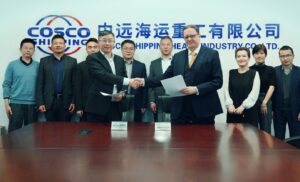WindWings-fitted Pyxis Ocean saves 3 tonnes of fuel per day, tests confirm
The six-month test period of the Pyxis Ocean, a Kamsarmax vessel retrofitted with two WindWings, has confirmed significant fuel savings, underscoring the potential of wind-assisted propulsion technology to support the shipping industry’s decarbonization efforts.
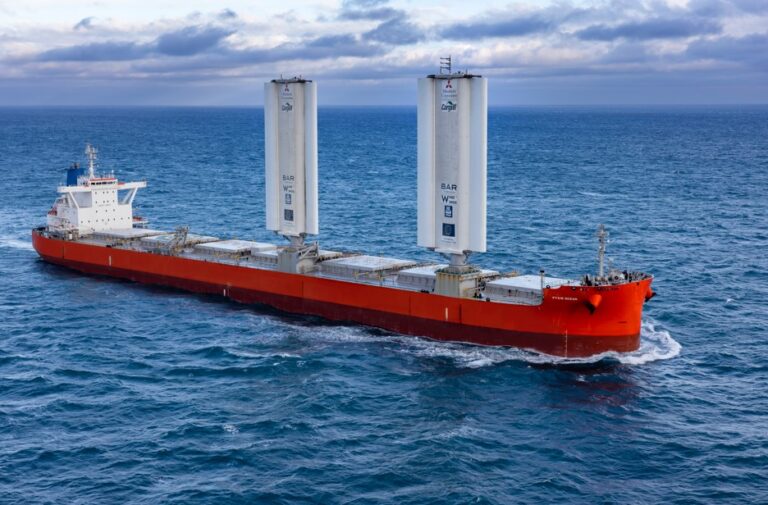
The 81,000 dwt ship, owned by Japanese shipping company MC Shipping (controlled by Mitsubishi Coporation) and chartered by Swiss corporation Cargill, has achieved performance consistent with what was predicted — equivalent to an average of 3 tonnes of fuel per day, according to Cargill.
“We are encouraged by the results and have learned a great deal about implementing wind assisted propulsion on dry bulk vessels,” Jan Dieleman, president of Cargill’s Ocean Transportation business, commented.
“We could never have done this alone – BAR Technologies and MC Shipping … have been fantastic partners in making the Pyxis Ocean a reality as well as the captain and crew. We are on the leading edge of change in the shipping industry and believe technologies that harness the wind could be an important, cost-effective way to achieve our decarbonization goals in the short, medium and long-term.”
The Pyxis Ocean hit open waters in August 2023. During the first six months of testing, the bulker has sailed the Indian Ocean, Pacific Ocean, North and South Atlantic, and passed Cape Horn and the Cape of Good Hope.
The ship was retrofitted with two WindWings — the large solid wind sails developed by BAR Technologies. The WindWings measure 37.5 meters in height and resemble large airplane wings. They are installed vertically to catch the wind and propel the ship forward, allowing the ship’s engine to be turned down so that the ship can travel at the same speed as a conventional ship using less fuel.
The wings are controlled by a touch panel on the bridge. A simple traffic light system tells the crew when to raise or lower the sails. Once raised, the operation is fully automated: sensors onboard constantly measure the wind, and the sails self-adjust to the optimal configuration.
Wind-assisted propulsion has the potential to be a cost-efficient way of supporting the International Maritime Organization’s (IMO) new greenhouse gas strategy. One of the IMO’s 2030 targets is to have 5%, striving for 10%, of energy coming from very low carbon sources by 2030 and wind-assisted propulsion could be an important way of achieving this.
Related Article
The early voyages have provided insight into more than just the application of the sails on a vessel, they have also highlighted broader logistical challenges in the global maritime system. Given that every port, terminal, and berth is different, their involvement is critical towards integrating wind-assisted propulsion technology into the global maritime system on a wider scale.
“The results of the Pyxis Ocean’s first voyage with WindWings installed clearly demonstrate that wind assisted propulsion can secure significant fuel savings and emissions reduction,” John Cooper, BAR Technologies CEO, pointed out.
“For example, in near optimum sailing conditions, during an open sea voyage, the Pyxis Ocean achieved fuel savings of 11 tonnes per day. And while the Pyxis Ocean has two WindWings, we anticipate the majority of Kamsarmax vessels will carry three wings, further increasing the fuel savings and emissions reductions by a factor of 1.5. With Cargill we are now able to validate our performance predictions and modelling in real-world conditions, it’s an exciting time as we begin to roll out WindWings production globally.”
“Cargill is creating ways for all WAP vessels – not just the Pyxis Ocean – to operate on global trade routes. So far, we’ve engaged with more than 250 ports to find ways of enabling vessel with large scale WAP to berth,” Dieleman added.
Cargill plans to continue the testing and experimenting of operational, technical and commercial aspects of the Pyxis Ocean to incorporate the maximum amount of learning into the potential design of future installations before scaling up.
In related news, Cargill decided to charter fully electric, wind-assisted Damen Combi Freighter (CF) 3850 vessels. The units are being built for the German joint venture Gerdes Green and have been subsidized by the German government.
The vessels will also feature wind-assisted propulsion in the form of foldable ventofoils from Econowind. This innovative wing-shaped device harnesses the wind to provide additional propulsion force, lowering dependence on the engine, and thereby reducing emissions.
Related Article
-
Germany awards funding for Cargill-chartered all-electric, wind-assisted ships
Business Developments & Projects

